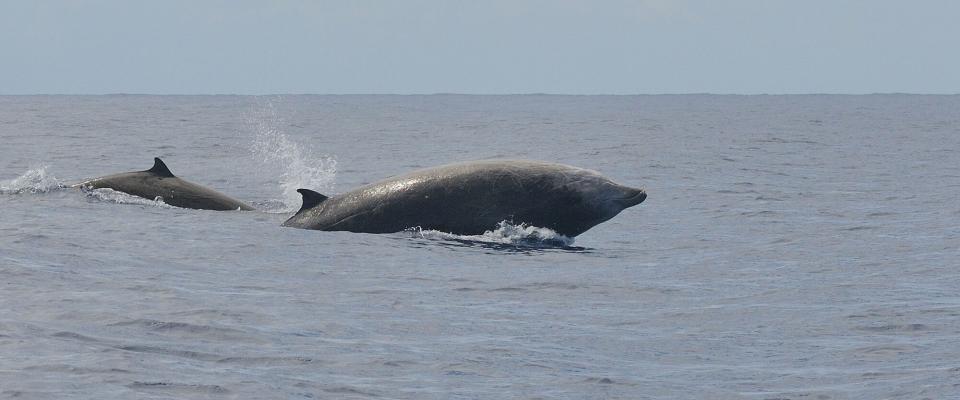Cuvier’s Beaked Whale
(Ziphius cavirostris)
Identity card
Taxonomy
Order: Odontocetes
Family: Ziphiidae
Species: Ziphius cavirostris
Measurements
5 to 7 m, weighing 1850 to 3000 kg
Lifespan
Up to around 60 years
IUCN status
Least Concern
Habitat
It is found in tropical and temperate waters of the Atlantic, Pacific and Indian Oceans, where it lives in very deep open seas.
Diet
Consists of deep-sea pelagic fish, crustaceans and cephalopods. It can dive down to depths of 3000 m to feed and hunts during the day and night.
Reproduction
It reaches its sexual maturity between 7 and 11 years, when it attains a size of about 6 m. Gestation lasts one year with the female giving birth to a calf every two to three years.
Morphological characteristics for distinction at sea
- Head: small, beak not very obvious, distinct melon. Mature males have two teeth protruding from the tip of the lower jaw.
- Fins: small sickle-shaped dorsal fin, small rounded pectoral fins, caudal peduncle with a median notch
- Spout: faint (2-3 times with 20-30 second breaks), bush-like, projected below 1 metre away and slightly forward/left
- Swim sequence: arches its body before diving vertically without exposing its tail fin, rarely jumps
- Colouring: grey to brown, light markings on the body and head, often with back scars
Click on the link to see Cuvier’s Beaked Whale in 3D:
Did you know?
Cuvier's Beaked Whale is a champion diver. It can stay underwater without breathing for more than three hours. The last record-breaking dive was 3 hours 42 minutes in 2020.
Banner photo credit: Douane SGC-AG

